Pushing craftsmanship to new heights on Mount Baker
Chef Melissa King treks through the glacial outdoors with National Geographic Photographer Kiliii Yuyan, foraging for ingredients and inspiration to elevate her craft.
Nature is ever-changing. Season after season, it grows and reshapes, constantly offering new things to see, explore, and connect with. In its perpetual state of evolution, nature serves as an endless source of inspiration for anyone looking to further their craft.
In the five-part content series Tasting Wild, acclaimed chef Melissa King (winner of Top Chef: Los Angeles All-Stars Season 17) teams up with National Geographic photographers and experts to experience nature’s creative power firsthand. Traveling to some of the most remote and unspoiled areas in the United States by way of the first-ever MAZDA CX-50, King pushes her boundaries to find inspiration, connect with the land, and fuel her creativity.
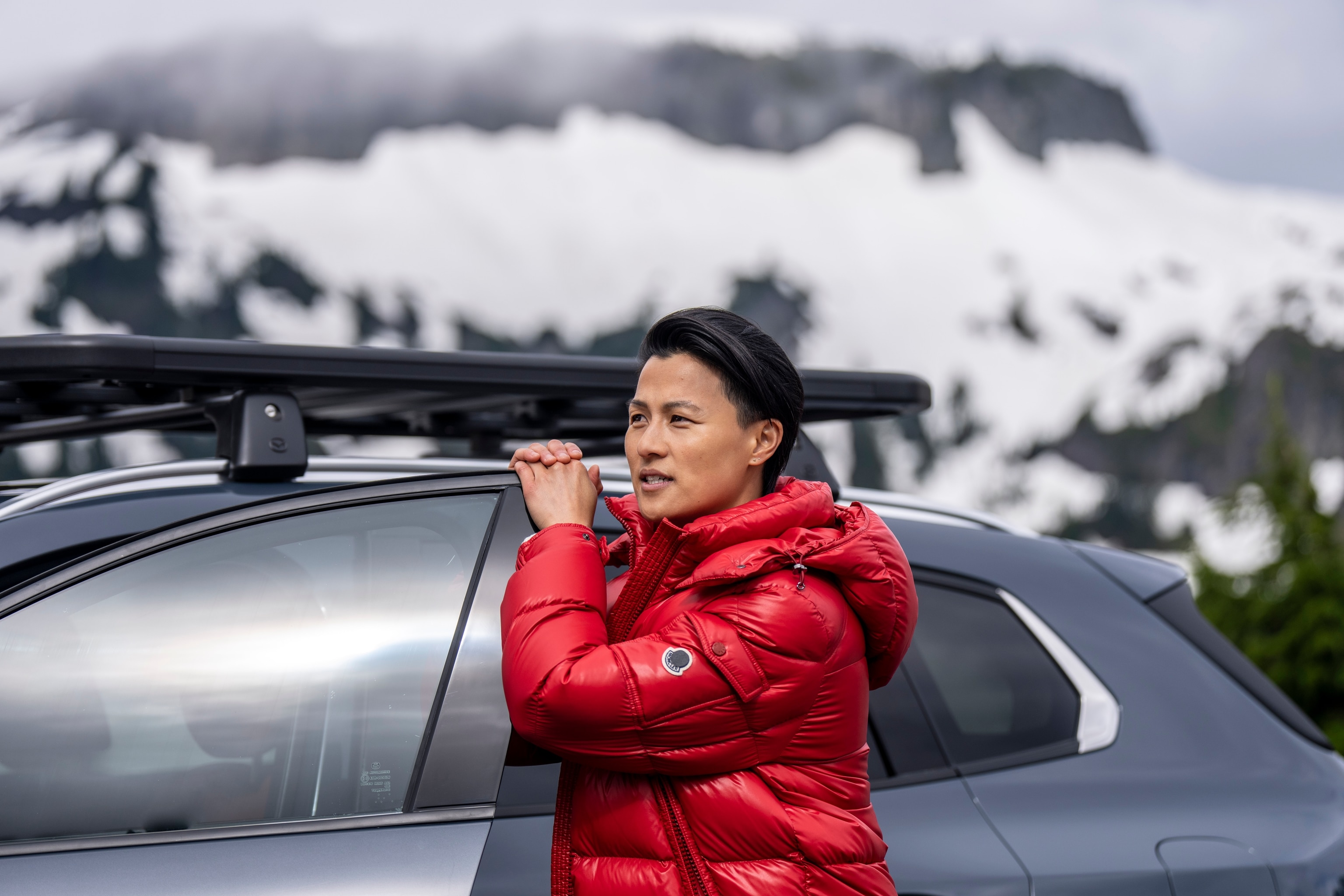
As a chef, King often pays homage to her Asian-American heritage by merging modern California cuisine with Asian flavors. She lives and works in San Francisco, CA, but is most inspired when she gets out of her element and into nature. For this part of her journey with National Geographic, she heads north to the snow-capped mountains of Washington State.
In the Cascades, King teams up with National Geographic Photographer Kiliii Yuyan to traverse the glacier-carved landscapes of the Mount Baker-Snoqualmie National Forest. Yuyan is an award-winning photographer and filmmaker whose work is informed by his ancestry. Of Nanai (East Asian Indigenous) and Chinese-American descent, Yuyan travels across Arctic regions document and share stories of the human relationship to the natural world from different cultural perspectives.

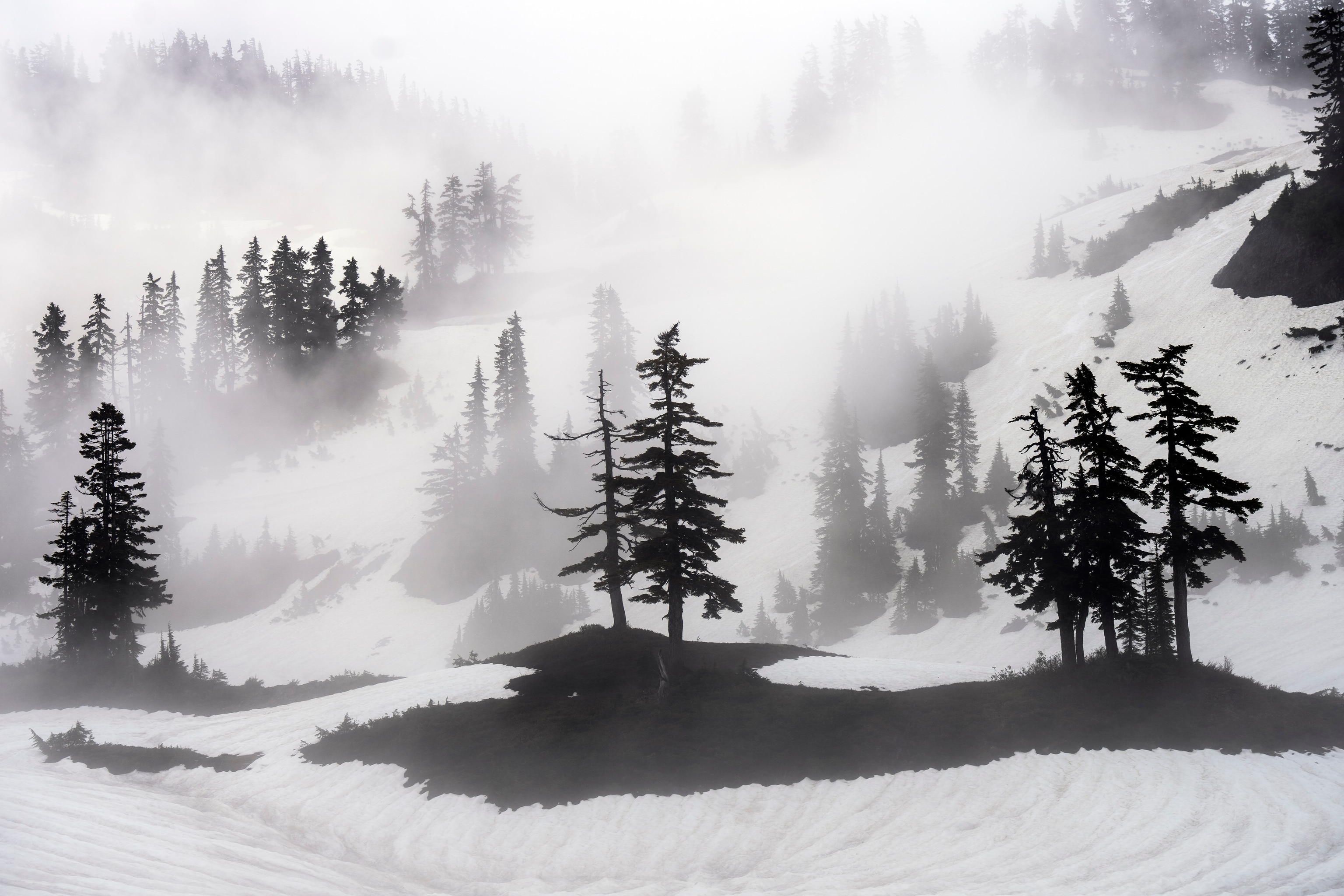
King and Yuyan have come to Mount Baker to find a deeper connection with the land and to hone their skills. “I’ve been cooking for 20-plus years, and I’m always discovering something new. And a lot of that has to do with nature. Not just relying on your taste buds. It’s relying on your sight, your smell, and finding ways to add those cues into my food,” she says.
To start their adventure, King and Yuyan jump in the Mazda CX-50 and effortlessly drive up winding mountain roads to the Mount Baker observation point. Located on the western side of the Cascade Range, between Mount Rainier National Park and the Canadian border, the area is home to some of the tallest peaks in North America and acres of stunning glacial ice. It even holds the world’s record for the most snowfall in a single year—a total of 1,140 inches (95 feet/29 meters) in the winter of 1998-1999.
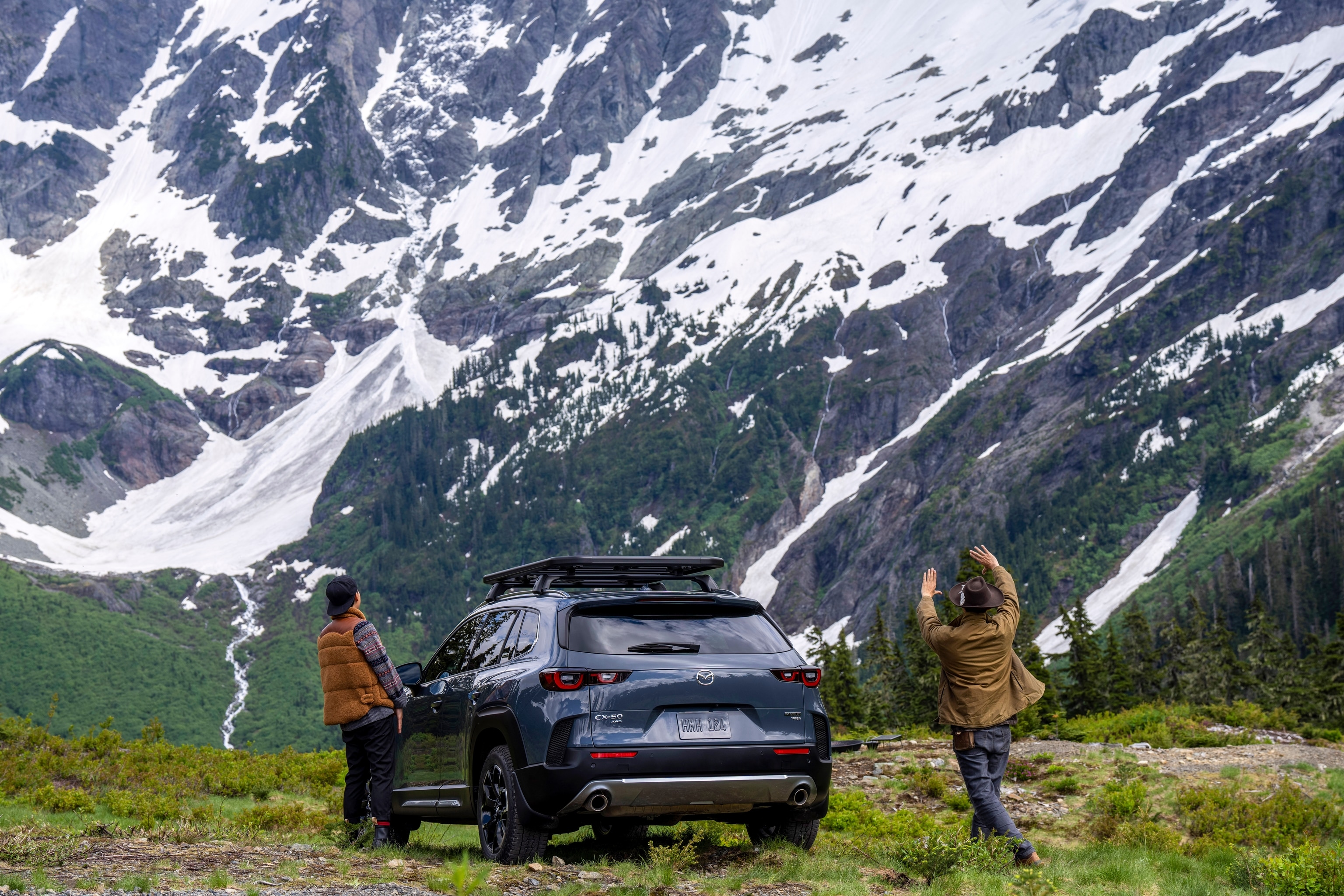

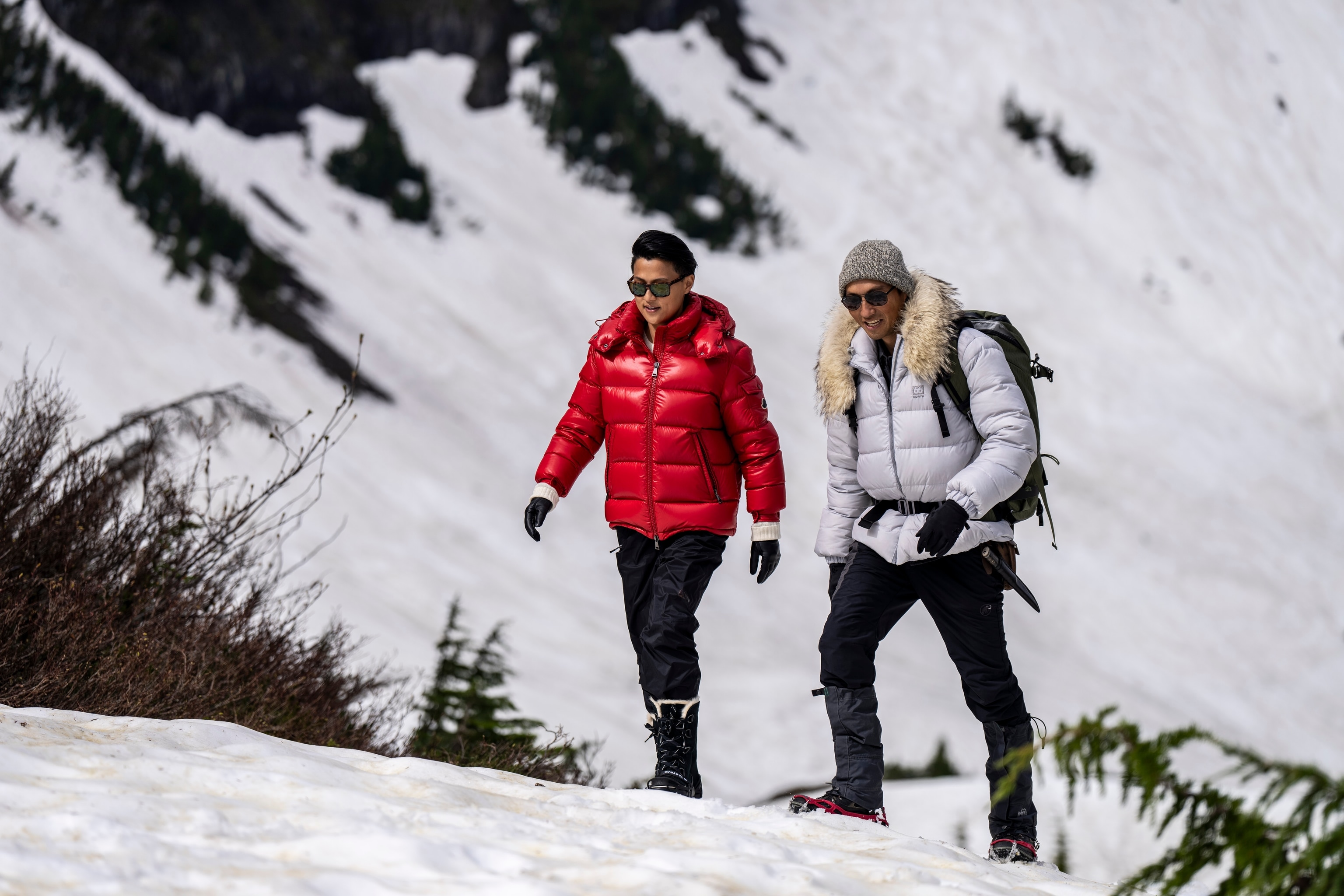
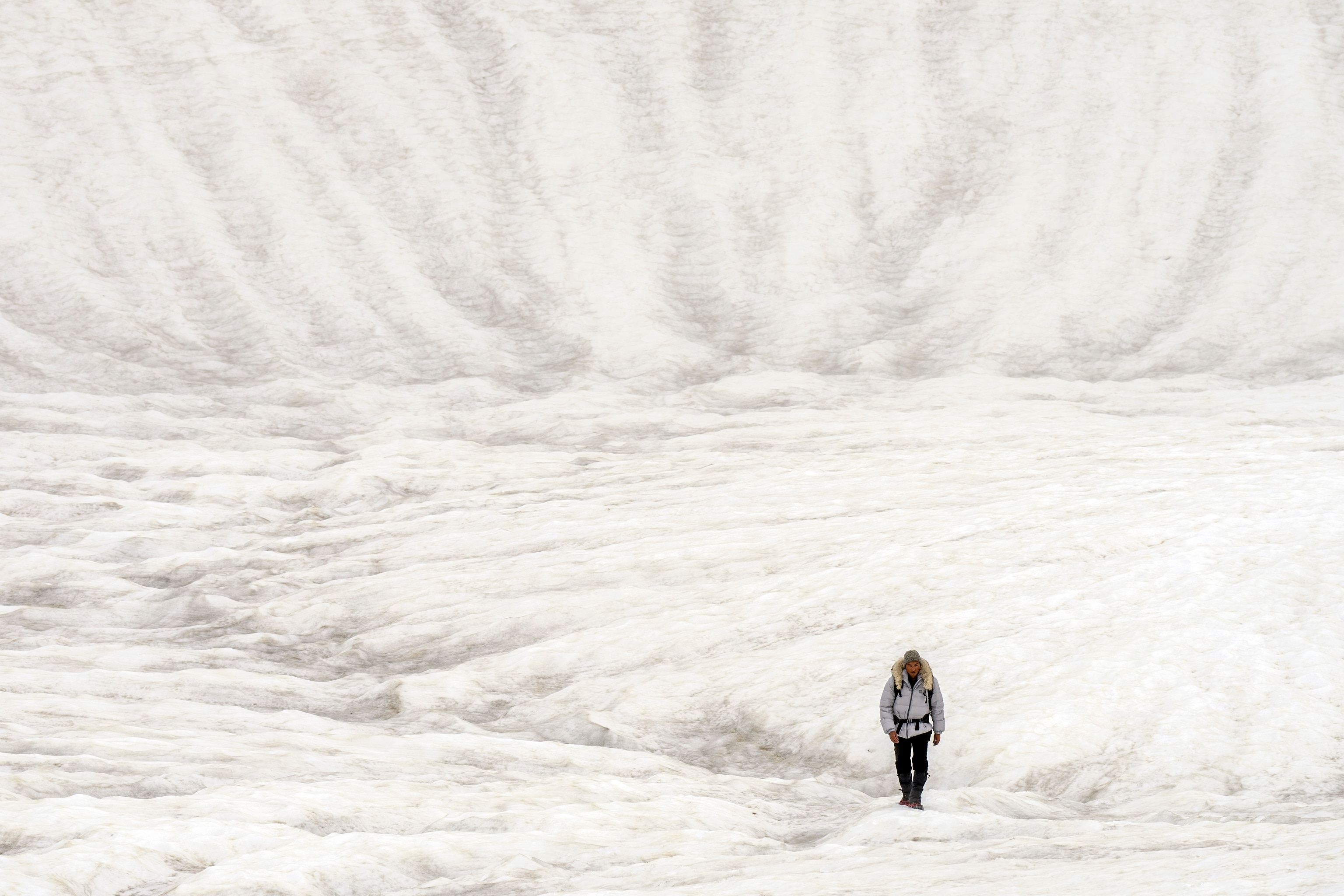
When they reach the observation point, King and Yuyan gear up for a hike over the vast expanse of cold, beautiful glacial ice. They pop open the trunk and grab microspikes to pull over their hiking boots for more traction on the snow. As a San Francisco resident, King doesn’t get to spend a lot of time in cold climates and is eager to explore. She can already feel the energy of the place. “There’s so much power in this beautiful glacier. It’s bold and big. I want to create a dish that really represents the spirit of everything we’re seeing here,” she says.
Out on the glacier, Yuyan shows King pockets of life where the snow has melted away and plants are starting to bloom. Yuyan spends much of the year in the circumpolar Arctic, and his expertise in glacial terrain is unmatched. “This kind of alpine environment is a lot like the tundra of the Arctic,” he says. “Everything has to live under this layer of snow for eight months out of the year.”
It takes a lot of willpower and resilience to thrive in these conditions, but year after year the alpine berries pop back up again. King picks a few from a bush and tastes the sweet fruit. “I love sourcing things locally, foraging straight off the trees, and finding ways to really tell a story through my food,” she says.
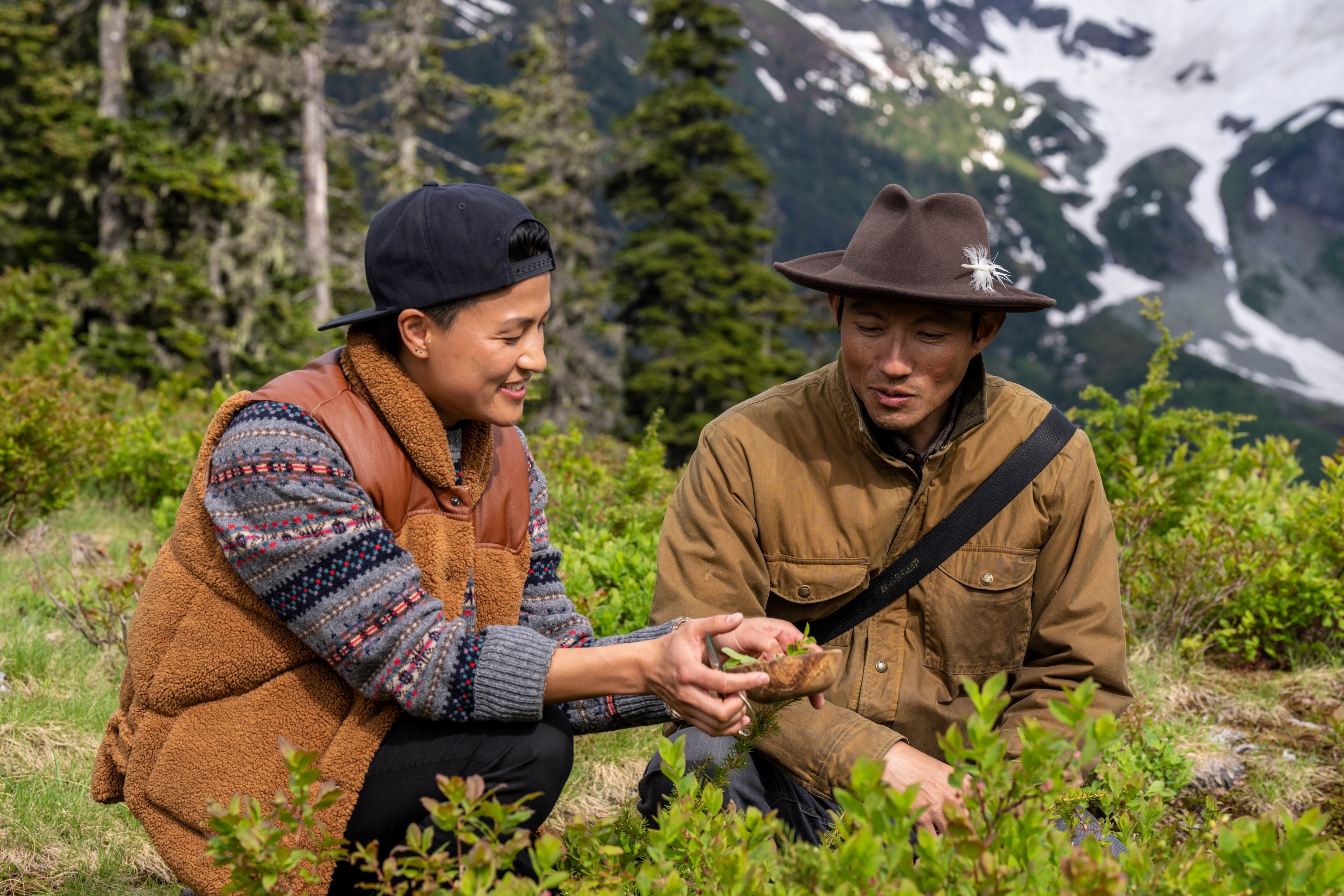
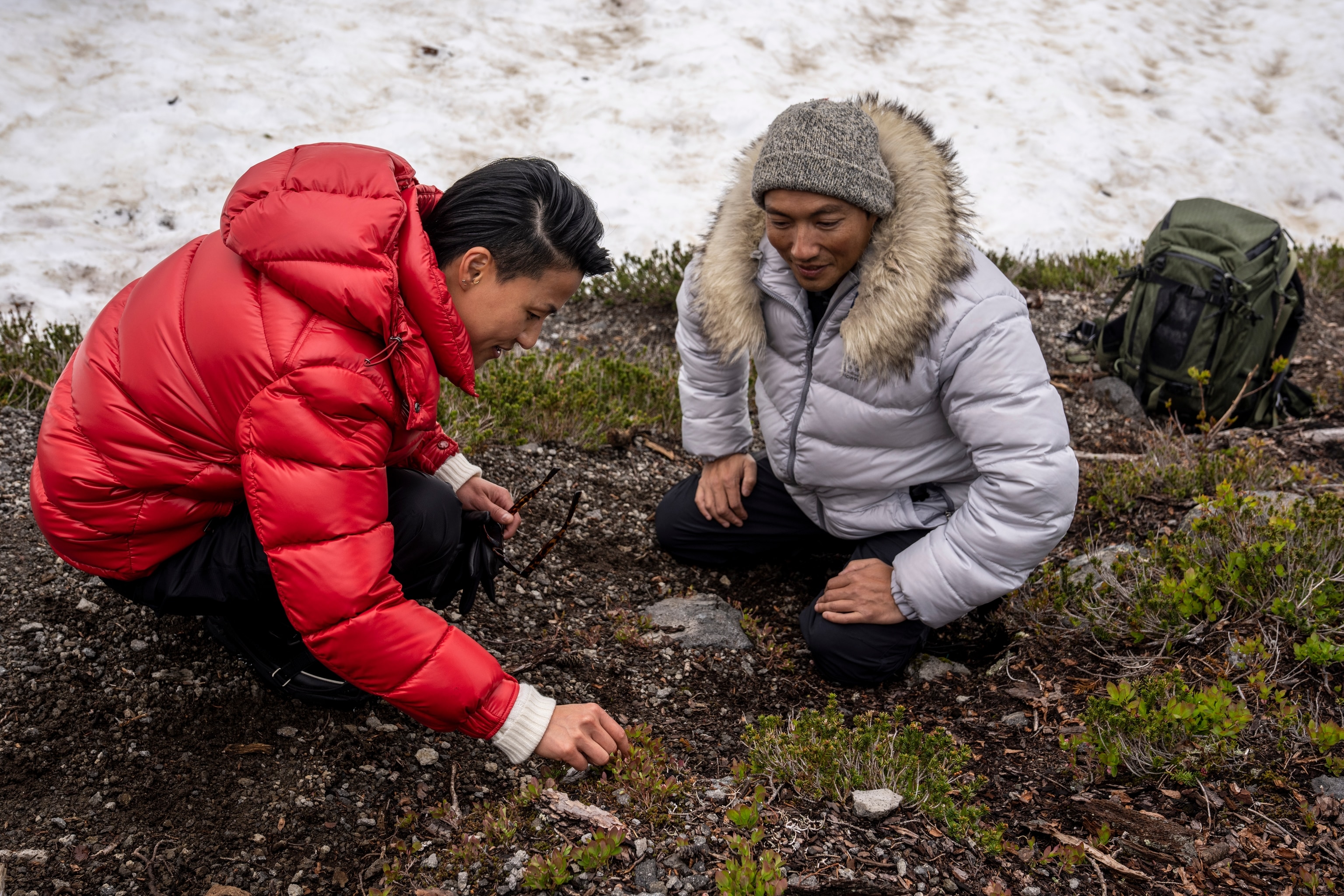
Yuyan leads King to an overlook with a spectacular view of Upper Bagley Lake. The lake is one of many striking examples of glacial ice and water slowly carving the land and rock to create the current landscape. “Nature is a master craftsman that forms the lakes here,” he says. Their plan is to fish for brook trout in the lake, but first, they head back to the CX-50 to grab kayaks off the roof rack carrier.
Yuyan is not only a National Geographic photographer, he’s also a traditional kayak builder. As a teen, he learned to build kayaks from elders in both his own Nanai community as well as communities across the Arctic. Today, he carries on the millennia-old tradition. The kayaks are framed in western red cedar and the joints are all hand tied, allowing them to flex and move with the water. “Traditional kayaks are special in that you’re not as insulated from the water itself. You can feel the movement and even the cold through your legs,” Yuyan says.
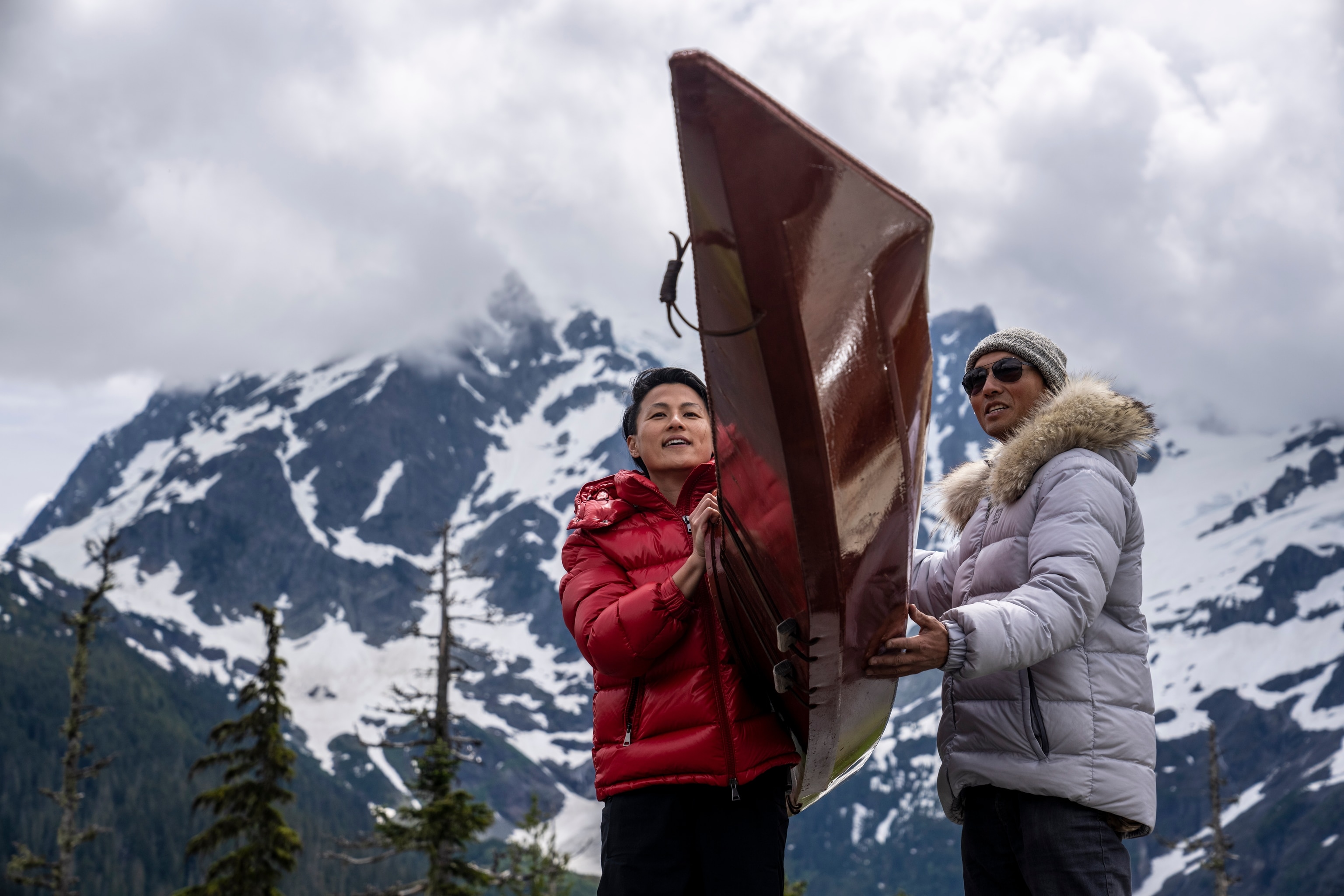
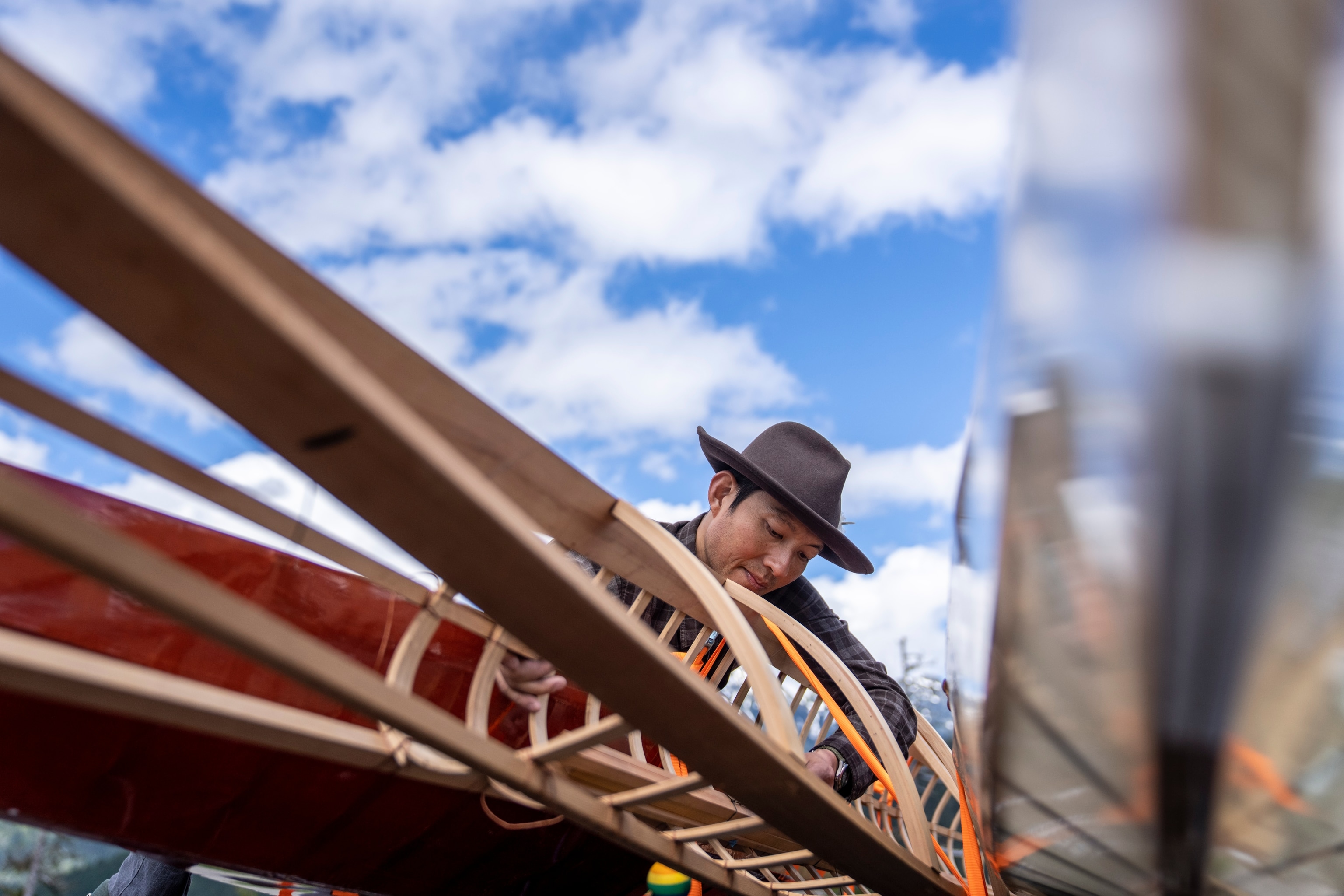
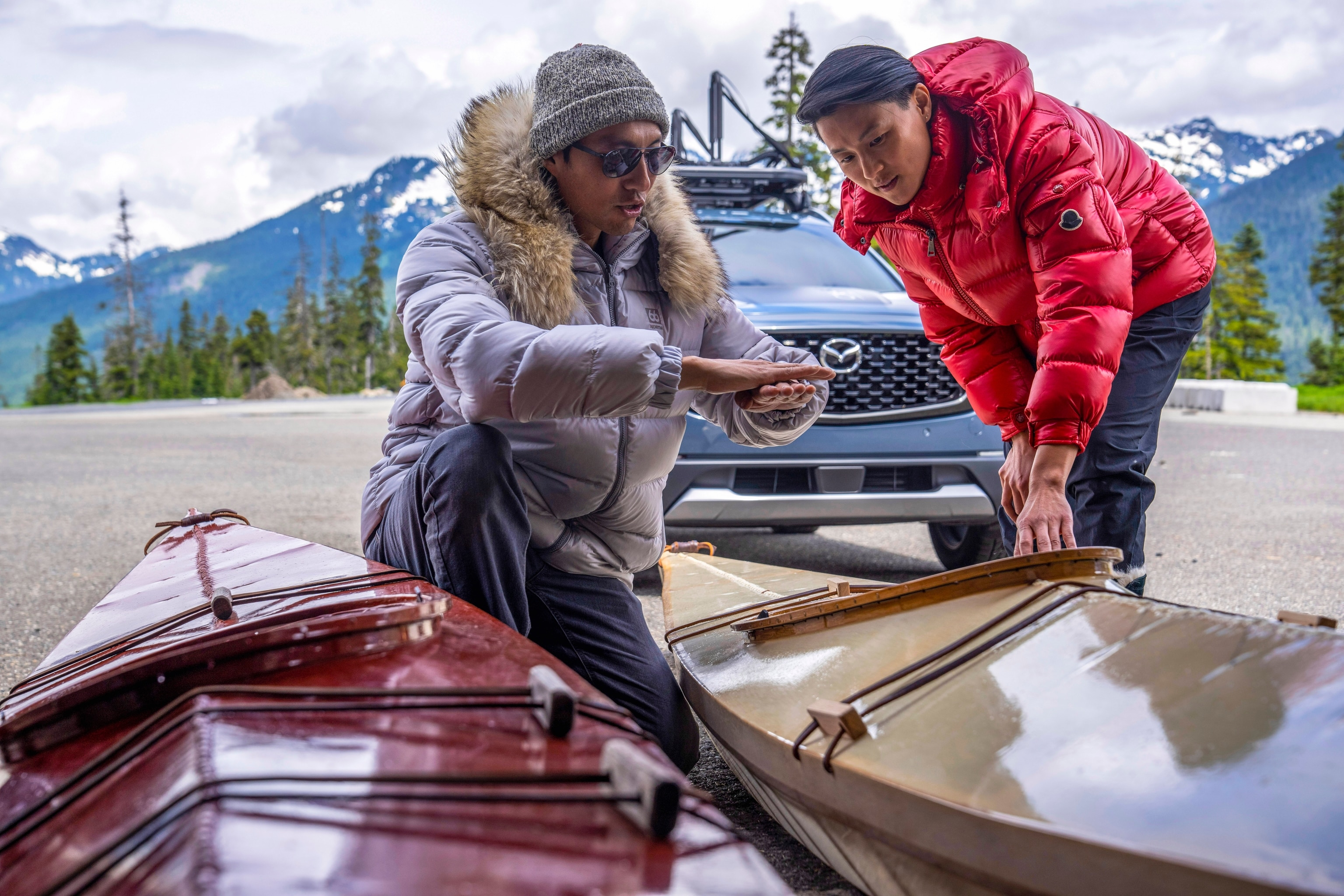
King and Yuyan launch Yuyan’s handcrafted kayaks from the snowy shore and paddle out onto Upper Bagley Lake. The water is calm and peaceful, and they cast fishing poles in search of brook trout.
Out on the lake, King reflects on how much she loves spending time outdoors. “As a chef, we tend to get stuck in kitchens… I think [being in nature is] a way that I find inspiration and connect deeply with what’s around me. I want to find a way to utilize what’s here in these lakes to create my dish,” she says. The fish aren’t biting, but King is feeling inspired from their day exploring the mountains and glacial landscapes and is ready to cook.
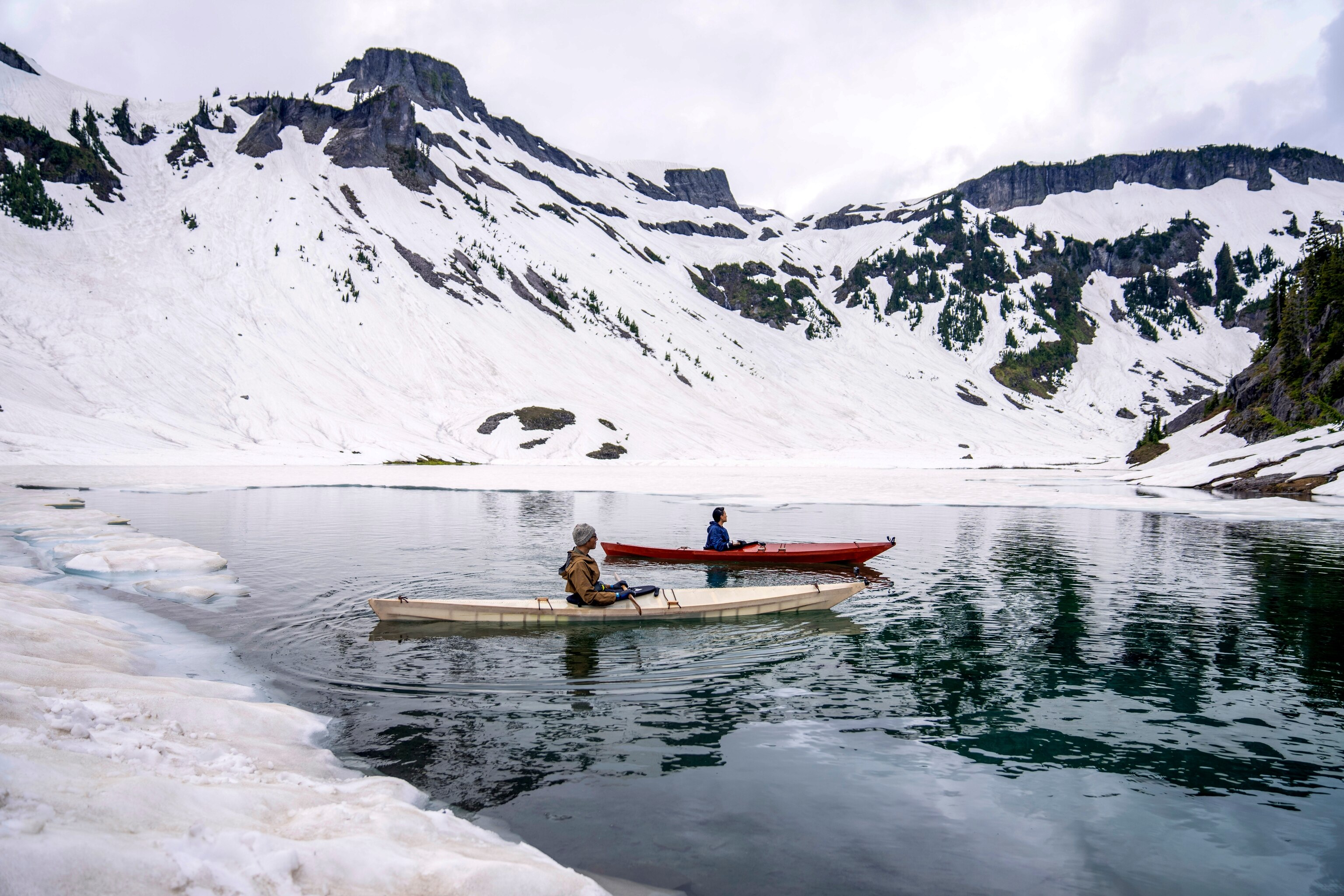
King and Yuyan drive the CX-50 up the mountain to a vantage point with a spectacular view of Mount Shuksan. Surrounded by pine forests and icy mountains, King sets up a makeshift prep station and begins to make her dish: salt-baked trout.
Used for centuries by cultures around the world, salt baking involves crusting fish, or another ingredient, in salt so it can cook in its own juices. It’s a technique King has used throughout her career, but never in a place like this. “To me, [the salt] represents the glacier and all that snow we saw,” she says.
King stuffs a locally sourced whole trout with spruce needles, salmon berries, and lemon slices. She adds egg whites to a mound of salt to bind it together, then mixes in different types of foraged pine needles. Finally, King buries the trout in the pine salt to trap and seal the fish’s natural flavors inside.
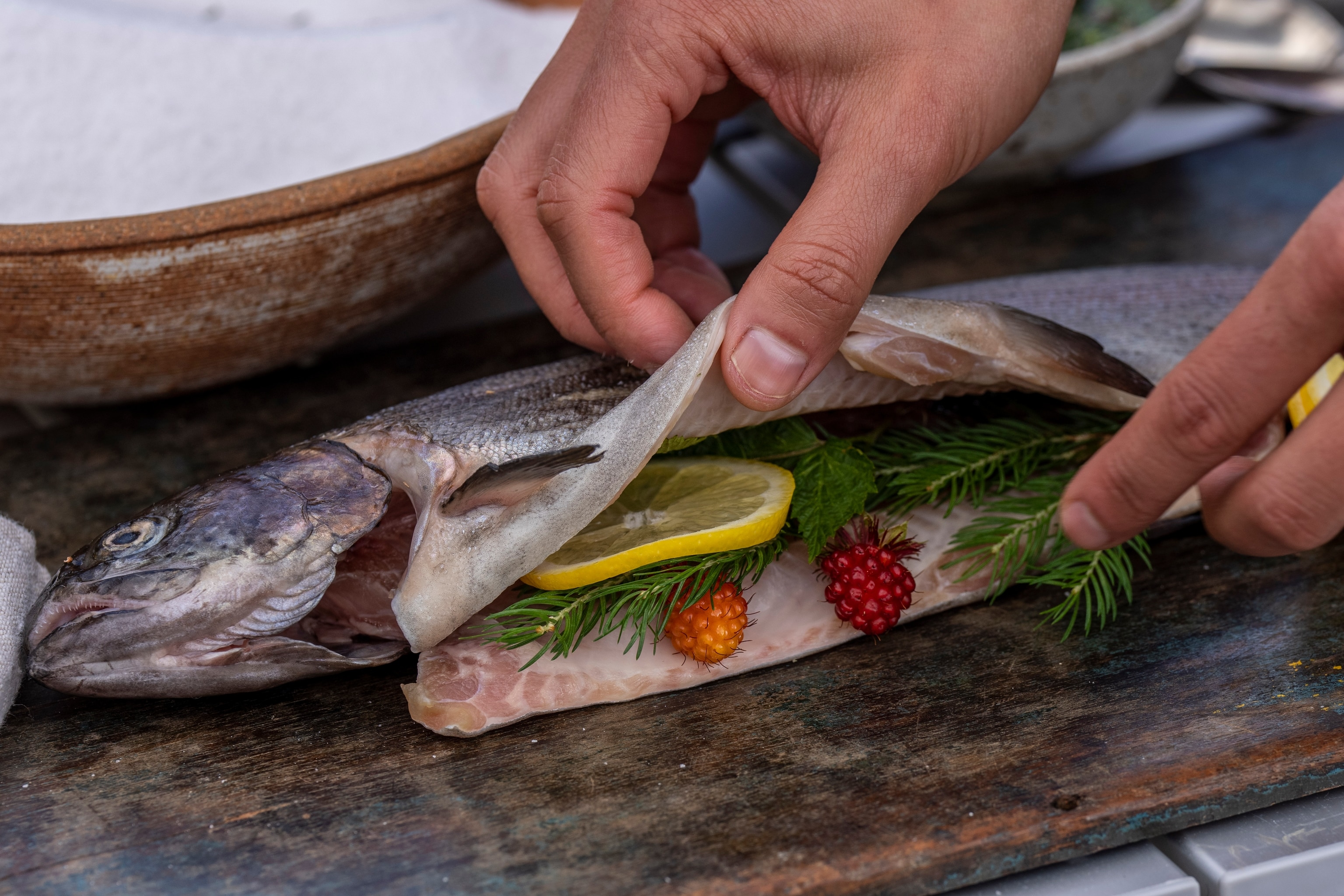
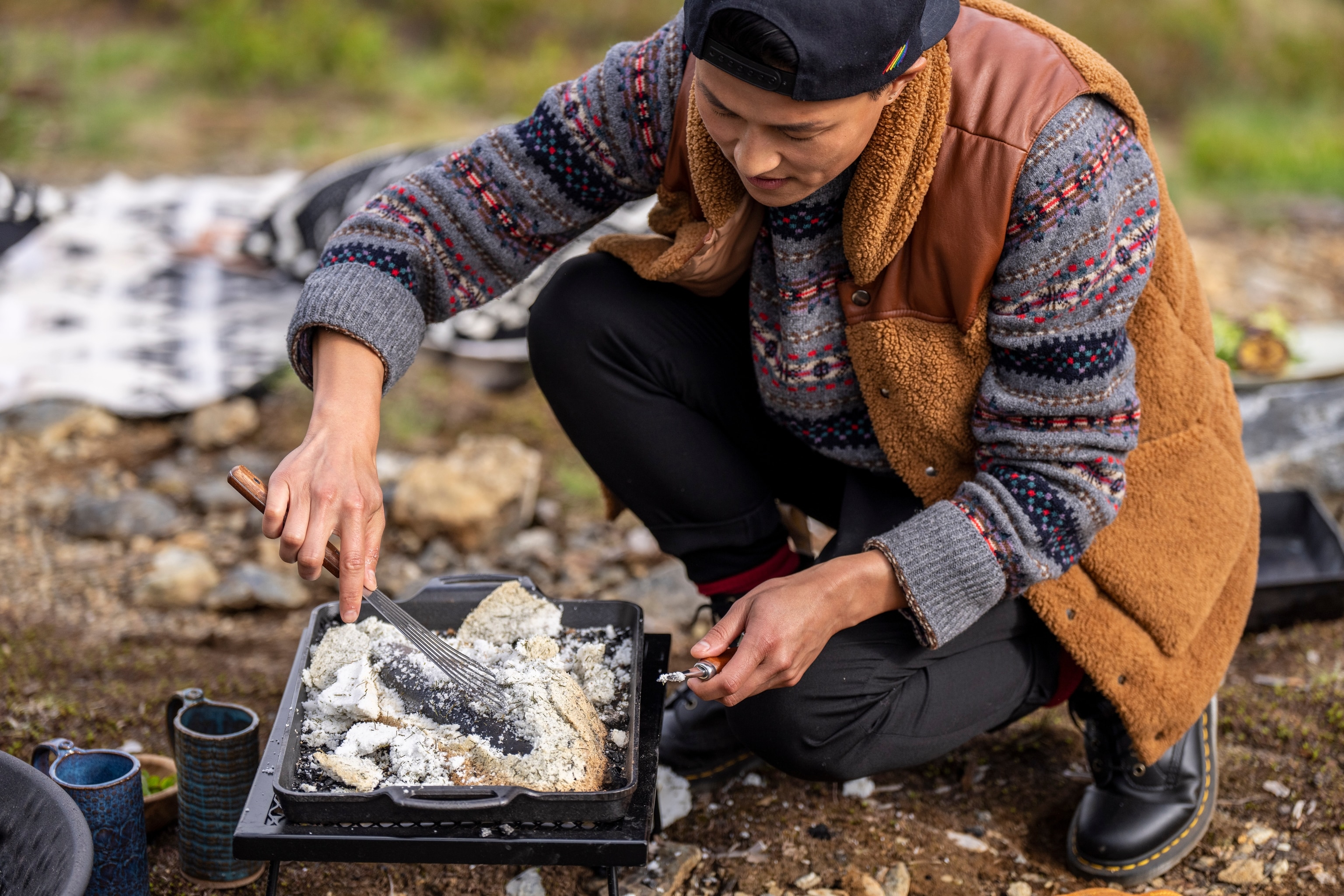
As she places the trout on the fire and covers it with hot coals, King tells Yuyan how the experience of being on the mountain inspired her to slow bake the fish, instead of grill it. “When we were up [on Mount Baker], there was such an element of time. Everything moving slow and evolving,” she says. King wanted to capture that feeling in her dish.
While the fish cooks, King and Yuyan discuss their love for the creative process. “The journey that the dish has gone through, it all ends at the moment the person actually tastes the flavors and the memories that are attached to it,” King says.
Yuyan feels the same is true for photography. “Hitting the shutter is like putting a period at the end of the sentence. When you make a photograph, all of the work happens beforehand,” he says.
When the fish is done, King pulls it off the fire and cracks open the salt crust. She scoops out perfectly tender trout filets and tops each with salsa verde—a Mexican green sauce traditionally made from tomatillos. She finishes the dish with a grilled lemon half and fresh greens before handing it to Yuyan to try.

King thanks Yuyan for taking her into the outdoors, showing her new places, and helping her find inspiration in ways that she wasn’t expecting. “Maybe it’s the mountain air, or the incredibly fresh ingredients I got to work with, but I’m coming away from Mount Baker with just so much gratitude and a new appreciation for [nature] and what [it] has to teach me,” King says.
Watch the full episode and the entire Tasting Wild series on Hulu and National Geographic YouTube.